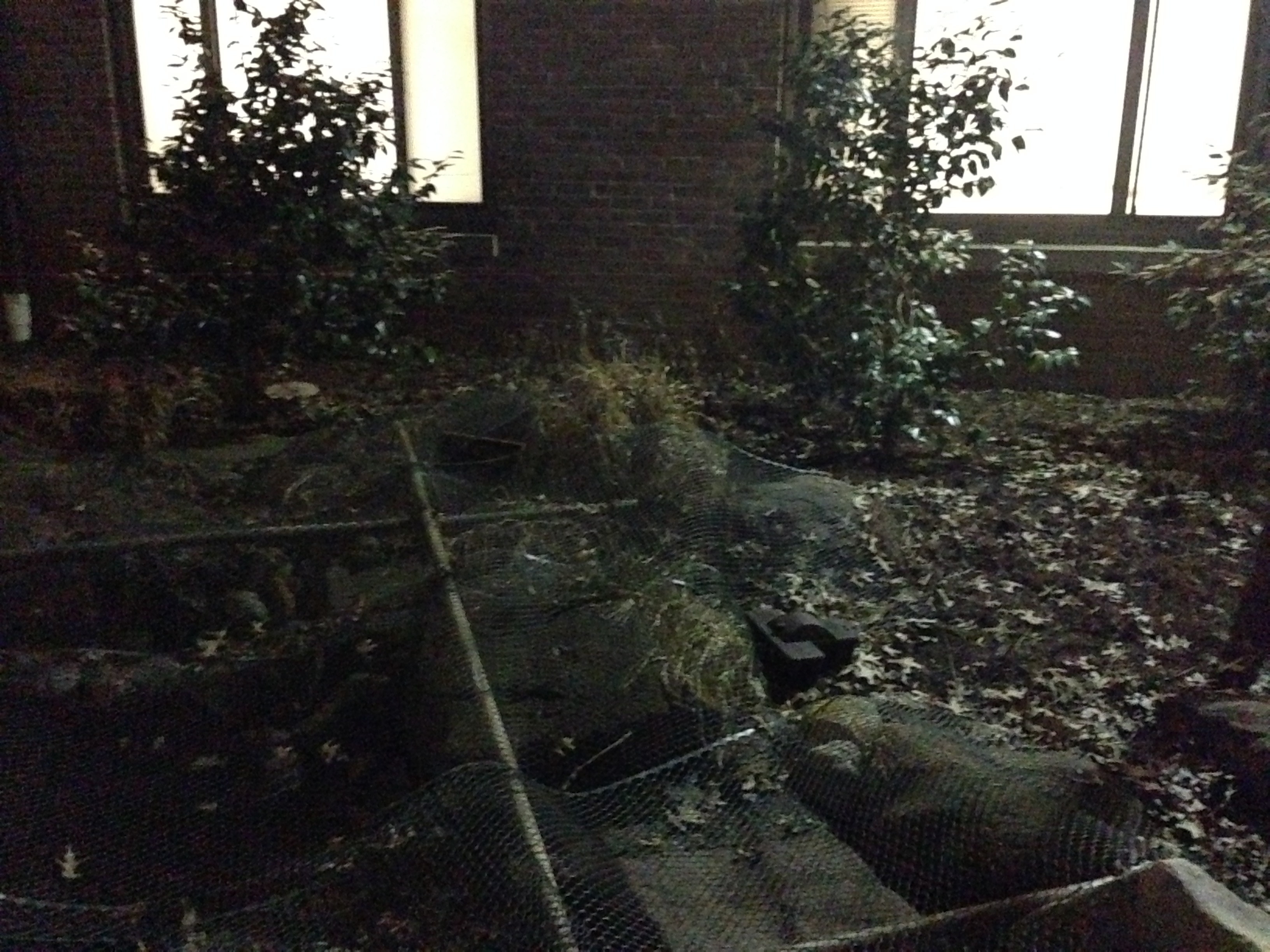User:Student 56/Notebook/Biology 210 at AU: Difference between revisions
No edit summary |
No edit summary |
||
| Line 92: | Line 92: | ||
[[Image:IMG_7890.JPG]] | [[Image:IMG_7890.JPG]] | ||
[[Image:IMG_2606.JPG]] | [[Image:IMG_2606.JPG]] | ||
'''''January 28, 2016 Microbiology''''' | |||
'''100-fold Serial Dilutions Results''' | |||
Dilution Agar Type # Colonies on Plate Conversion Factor Colonies/mL | |||
10-3 Nutrient 1040 x 10^3 1,040,000 | |||
10-5 Nutrient 60 x 10^5 6,000,000 | |||
10-7 Nutrient 2 x 10^7 20,000,000 | |||
10-9 Nutrient 3 x 10^9 3,000,000,000 | |||
10-3 Nutrient + tet 121 x 10^3 121,000 | |||
10-5 Nutrient + tet 1 x 10^5 100,000 | |||
10-7 Nutrient + tet 1 x 10^7 10,000,000 | |||
10-9 Nutrient + tet 0 x 10^9 0 | |||
Revision as of 15:06, 6 February 2016
January 13,2016 20x20 Transect
Introduction Transect Description My group was assigned to transect #4. This transect consisted of a man-made pond that is surrounded by large rocks to add to the aesthetic of the pond. There are also several statues and signs that are around the pond periodically that were put there by AU staff. There are several small trees that are around the pond that give it shade, but that also deposit leaves all over the ground. The ground around the pond was coated in leaves and debris. There were not debris in the pond itself because there was a covering over it made of sticks and mesh. Behind the transect is a residence hall, which provides much artificial lighting to be able to see in the dark.
Biotic Components
-Water
-Trees
-Small Shrub-like Plants
Abiotic Components
-Rocks
-Soil
-Dead Leaves
January 21, 2016 Protists and Algae
Purpose During this lab we identified different types of Protists and Algae in our hay infusions that were made the week prior. This was helpful because it allowed us to work with a dichotomous key and learn to identify and make observations on moving organisms. We also learned more about our transect by looking at and identifying the types of organisms that live there.
Materials and Methods First, we made observations about our hay infusion to see how it changed from when we originally made it. Then we made wet mounts for microscopic observation from three different niches in the hay infusion (one sample from the bottom of the jar, one from the middle, and one from the top). We then prepared and plated serial dilutions to be used the next week in the Microbiology Lab.
To make the serial dilutions four tubes filled with 10 mLs of sterile broth were labeled with 10^-2, 10^-4, 10^-6, and 10^-8 respectively. Four nutrient agar and four nutrient agar plus tetracycline plates were also labeled 10^-3, 10^-5, 10^-7, and 10^-9 respectively for both tetracycline positive and negative plates.
The hay infusion was then swirled with the lid on to mix up all the organisms. 100 microL was then added from the hay infusion to the 10 mLs of broth in the tube labeled 10^-2. The tube was then mixed thoroughly. 100 mLs of the broth from tube 10^-2 was then added to the 10^-4 tube and so on until all the dilutions were made.
The dilutions were then plated by pipetting 100 microLs from the 10^-2 tube onto the nutrient agar plate labled 10^-3. the sample was then spread carefully so that it was even across the plate. This was repeated with the 10^-4 dilution on the 10^-5 plates and so on. The agar plates were then placed on the rack with the agar side up.
Data
Hay Infusion Observations - smells mucky, much like a pond or a mud pool - brown color with leaves sticking out of the water - layer of soil on the bottom - defined layers between the top, middle, and bottom - mold growing on the top but no green shoots
Organisms on the Top of the Hay Infusion
- Peranema: cell elongated, colorless, with a broad, rounded edges. Highly plastic when stationary, often appeared to vibrate
- Amoeba: bloblike, small and creeped along not very fast. Had a single disc-shaped nucleus
- Actinosphaerium: Spherically shaped with radiating "spines"
Organisms at in the Middle of the Hay Infusion
- Colpidium: small body, oval shaped, with small mouth; fast swimmer
- Peranema: elongated, colorless cell with a broad, rounded posterior when moving
- Pelomyxa: Large creeping organism that moves using lots of small colored things (small nuclei)
- Oedogonium: Algae where the chloroplast forms a reticulated network extending from pole to pole of each cell
Organisms at the Bottom of the Hay Infusion
- Peranema: elongated, colorless cell with a broad, rounded posterior when moving
- Chlamydomonas: Cell is oval-shaped, fast moving, two observed flagella, colorless
- Chilomonas: Cell is elongated with a narrowed posterior, moves fast, colorless, two observed flagella
Pictures of the organisms
January 28, 2016 Microbiology
100-fold Serial Dilutions Results
Dilution Agar Type # Colonies on Plate Conversion Factor Colonies/mL 10-3 Nutrient 1040 x 10^3 1,040,000 10-5 Nutrient 60 x 10^5 6,000,000 10-7 Nutrient 2 x 10^7 20,000,000 10-9 Nutrient 3 x 10^9 3,000,000,000 10-3 Nutrient + tet 121 x 10^3 121,000 10-5 Nutrient + tet 1 x 10^5 100,000 10-7 Nutrient + tet 1 x 10^7 10,000,000 10-9 Nutrient + tet 0 x 10^9 0










